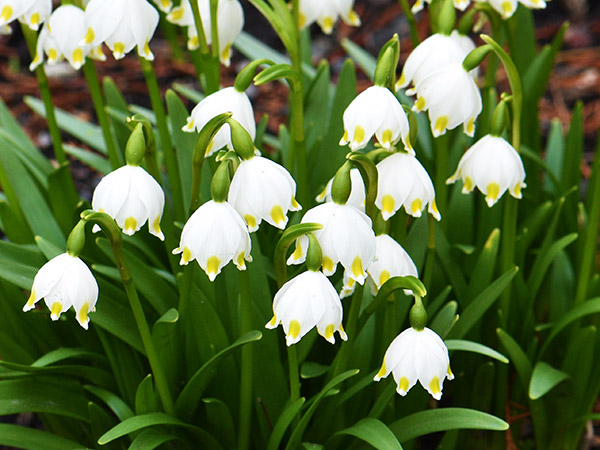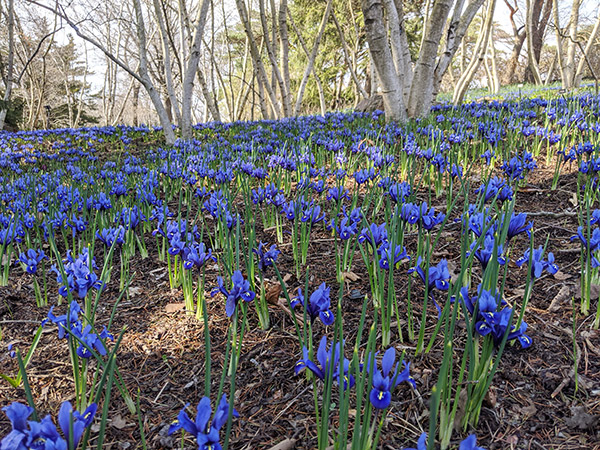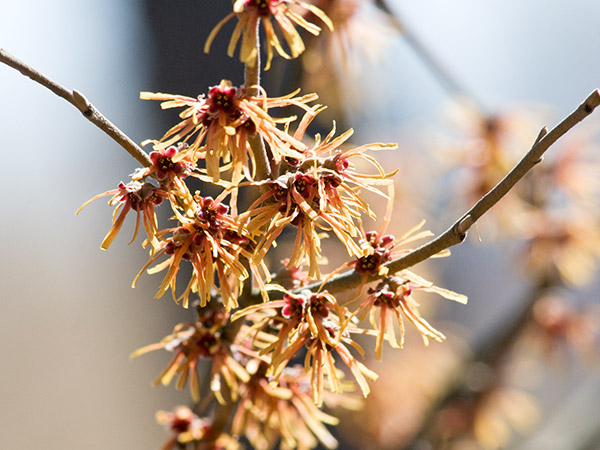

An Early Spring Walk
This welcome season, with its bird song, fragrant blossoms, and gentle zephyrs, tempts us all to step outside and enjoy the warming days.


The Arrival of Spring
In the northern hemisphere, we anticipate this season of new life and celebrate it (often long before it arrives) with flower and garden shows, pageants, and parades. In certain quarters, Mardi Gras and Carnival are synonymous with the advent of spring, as well as Easter, Passover, and other seasonal holidays. The gradual lifting of light, coupled with a subtle change in the sun’s angle, reinforces the age-old feelings of hope, rebirth, and joy that define this teasing time.
Watch and Walk the Garden
Throughout the Chicago Botanic Garden’s 28 display gardens and four natural areas, daily signs of spring multiply as sunlight and warming temperatures push back any lingering snow and expose tiny treasures. Follow the Garden’s loyal cadre of early morning exercisers in March to monitor flowers. They know the route—Bulb Garden, Regenstein Center, and Landscape Gardens. The birders look for early signs of spring in the McDonald Woods and on the shores of the Lakeside Gardens.
First Flowers
The reliable blossoms of vernal witch hazel are usually the earliest woody blooms at the Garden. These late-winter or early spring flowers feature spiky, but very fragrant, yellow petals with red inner calyxes, sometimes hidden alongside last year’s dried leaves that still cling to the branches. Look carefully for them along the walkway to the Landscape Gardens. On sunny days, their petals should be open; on cloudy days, they will close up as a protection against cold and frost.


The Warmth of a Walled Garden
The sunlit brick walls of the English Walled Garden provide protection from early spring winds and late frosts. The radiating warmth creates microclimates and encourages blooms from tender plants like Lenten rose or bear claw hellebore. Check for flowers in unusual tones of apple green or dusty rose. Little bulbs, planted by the thousands here, will emerge this season in sequence, blooming first in the garden’s open sunny spaces. Stately tulips, ornamental onions, fritillaries, and foxtail lilies will punctuate garden borders with form and color later in spring.
The Daffodils Trumpet!
The Garden’s signature collection of Narcissus announces the arrival of warmer months. Hundreds of thousands are massed outside the Garden wall, on the open hillsides of Evening Island, Bird Island, in the parking lots, and throughout the interior gardens. They peek through rich leaf compost before blooming in magnificent clumps of yellow, white, apricot, and orange. This is a bulb the Garden highly recommends to local gardeners for its reliability, showmanship, and wildlife resistance.
Woodland Restoration Equals the Return of the Natives
The Garden’s conservation and restoration efforts are first visible in spring throughout McDonald Woods and along Lake Cook Road. By removing invasive plants such as buckthorn, garlic mustard, purple loosestrife, and more, the Garden allowed the return of native plants that once thrived here. Sunlight now filters to the woodland floor, encouraging entire communities of plants to develop. The resident raptors arrive first, only to be joined by flocks of migrating song birds, water and shoreline fowl, as well as other birds of prey. The ideal combination of open water and diversity of plant material at the Garden makes it one of the top birding spots in the Chicago area.
No season is more longed for, or dreamed about, than spring, perhaps because it rubs shoulders with the harshest months of the year. This spring, discover daily miracles and celebrate the plant world at the Garden in all its optimism, color, and beauty.

